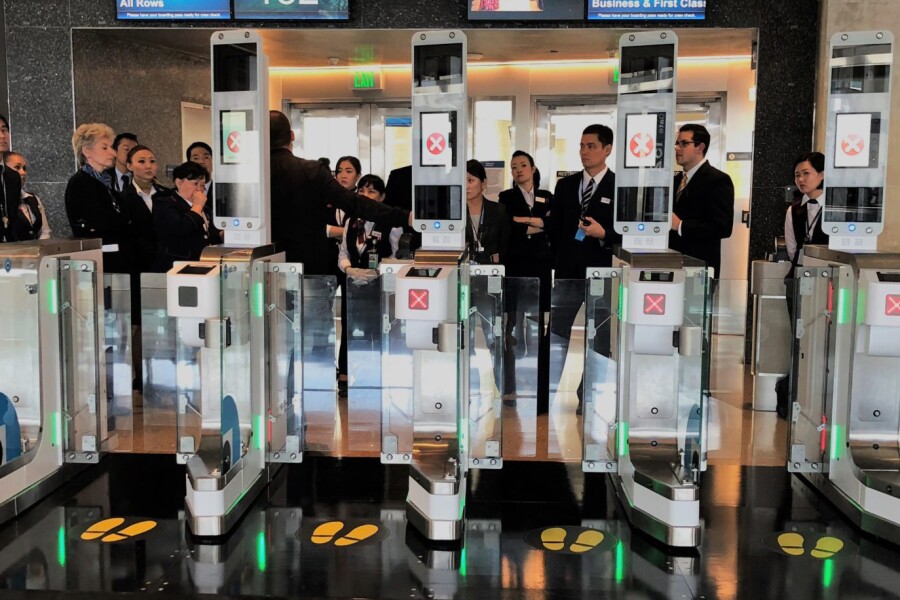In an effort to speed up aircraft-boarding lines, the Transportation Safety Administration has instituted a test at LAX that will let travelers act as their own gate agents. As reported in the Los Angeles Times, the three-week experiment involves adding two new boarding lanes (“e-Gates”) at the Tom Bradley International Terminal. Fliers with microchip-containing e-Passports can scan them along with a boarding pass, and then “facial matching algorithms,” developed by Lisbon-based tech company Vision-Box, will compare an image taken during the screening process with the digital photograph that matches the ID number associated with the passport.
The goal is to speed up airport security and lessen the TSA’s dependence on wannabe corrections officers who yell at people to take off their shoes. For now, human agents are double-checking the computers’ work; if the tests are successful, the TSA plans to roll them out in autonomous environments throughout the country.
The LAX test follows successful rollouts of the technology at several airports in 2017, including New Zealand’s Christchurch Airport and Heathrow in the United Kingdom, where British Airways installed scanners at several boarding gates serving domestic flights.
During this trial at LAX, Homeland Security will be studying the privacy impacts of this technology, as if we hadn’t left all such expectations at the airport door. We’re left with just one big question: When this technology inevitably results in robotic pat-downs, will we enjoy them more or less than the ones we get from TSA agents?
>>Next: With an Airline Ban at Hand, What’s Next for Smart Luggage?








